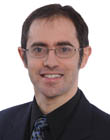|
|
 
|
|
Author
|
Topic: Biz crosses blurry line on 'true 3D'
|
System Notices
Forum Watchdog / Soup Nazi
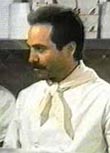
Posts: 215
Registered: Apr 2004
|
 posted 07-19-2011 04:17 PM
posted 07-19-2011 04:17 PM


Biz crosses blurry line on 'true 3D'
Source: Variety.com
quote:
In the run-up to the June 28 bow of "Transformers: Dark of the Moon," Paramount and Michael Bay made it a selling point to tout that the pic was "shot in 3D." The effort aimed to clearly differentiate the franchise's latest installment from pics converted to 3D after lensing, a process that has generated growing ire on the part of moviegoers and contributed to lower grosses for 3D pics.
Trouble is, "Dark of the Moon" wasn't shot entirely in 3D. In fact, about half the picture was shot in 2D and converted to 3D.
For filmmakers versed in the 3D process, however, such distinctions are increasingly moot.
"Transformers" helmer Michael Bay, in fact, says conversion is inherently part of the process for all live-action 3D films.
Bay encountered troublesome technical issues with 3D capture on "Dark of the Moon": misalignment, reflections on the lenses, cameras getting out of sync.
"Sometimes the image is broken and you've got to fix it -- and sometimes it's not fixable, so you have to have conversion companies," said Bay. "It's a must. You can't keep it all native."
The distinction between "real" and "fake" 3D pics is increasingly a false one. Even pics that advertise "shot in 3D" quietly rely on conversion to fix footage and create sharper images.
Bay said he recently warned his longtime friend, "Amazing Spider-Man" d.p. John Schwartzman, that Sony and helmer Marc Webb will end up using conversion on that native-3D pic as well.
"We had a chat and (Schwartzman) goes, 'Well, I shot the whole thing in 3D.' I said 'John you haven't even begun. You think you shot it all in 3D? You have so much broken stuff in there, you don't even know.'?"
Even "Avatar," generally regarded as the pinnacle of 3D precision, had to use 3D conversion to fix shots that had technical problems. After James Cameron helped convince Bay to shoot 3D for "Transformers 3," Bay used conversion even more.
On "Dark of the Moon," some shots are lensed in native 3D, some are all converted, some are a mix of conversion and stereo-rendered CG and some are all CG. And parts of the movie are 2D by design, as Bay wanted to give the audience "depth breaks."
Somewhere from 47% to 52% of the pic's total running time was converted, depending on what shots are counted as "converted." However, since some of the movie is all-CG, in fact less than half of the running time is truly "shot in 3D" -- that is, captured with a stereoscopic camera.
Shooting 3D means shooting digital instead of 35mm, but Bay prefers the look of film for closeups, so any closeups with stereo depth were converted. He also says he used a 3D rig only for his "A" camera at any given moment, because it was simply too cumbersome to manage more than one 3D rig with his run-and-gun shooting style.
Even using the 3D rig selectively, "We had to do a lot of massage work on some of the native photography just to make sure it was comfortable for viewers," said Corey Turner, stereographer on "Transformers 3." He noted that the pic was shot 18 months ago, with 3D rigs that are already obsolete.
"You need both (native and conversion) in the absolute best of scenarios," said Turner. "Let's just say you're able to get the most precise, accurate 3D in the world, but your camera doesn't fit in the location you want to shoot. Let's say it's a small space. What are you going to do? You can try to redefine your rig, you spend a lot of money doing that for a couple of quick shots. Or you can choose to shoot those shots and convert them later."
Turner has heard several ideas of what to shoot native and what to convert, but his idea is simple:
"Shoot what you can native, convert what you can't. And you just kind of go from there. What's more important to me is you go into it with a plan of what kind of 3D movie you want to create."
Lack of creative planning and the last-minute rush to convert movies to 3D has given rise to conversion's bad rep, said Turner. "We've got to stop these 10-week-turnaround conversions. I spent almost a year on 'Alice in Wonderland.' We spent almost nine months on 'Transformers' for just our conversion. You've got to stretch that time out a little bit to make sure it's clean, make sure it's good."
The lead conversion company on "Transformers 3" was Legend3D, with work also done by In-Three and Prime Focus. Turner said that though he'd worked with Legend3D on "Alice in Wonderland," he warned them the quality they'd reached on "Alice" would be unacceptable for "Transformers."
"I think we all looked at each other and there was a little bit of fear in the room," says Turner. Legend3D topper Barry Sandrew said, "We actually spent a year and a significant amount of R&D just preparing for 'Transformers 3,' because this is the most vfx-heavy movie that's ever been converted."
Sandrew credits Bay as "the first director that's been able to intercut conversion and camera capture and do it seamlessly."
Bay and Turner lavish praise on Legend3D, In-Three and Prime Focus for making it possible for Bay to cut seamlessly between native and converted 3D. "Legend did excellent work, they went beyond my expectations," says Bay. "I was just massively impressed. I didn't know they had it in 'em, cause I'm tough on effects and they did a fantastic job." Turner says "They set a really high bar. All of our other conversion vendors had to fall in line with the quality we were getting from Legend, and they all did."
While Bay and Turner were more than satisfied with the 3D quality on "Transformers 3," not everyone agrees with their assessment.
On a Web listserv, DreamWorks Animation global stereoscopic supervisor Phil McNally noted tartly, "A cardboard cutout head over a blurry background is NOT an interesting or creative depth composition. When you can intercut 2D shots into your sequences without anyone noticing this is a clue that your movie is NOT interesting in 3D."
But Rob Engle of Sony Imageworks, while admitting he hadn't yet seen "Transformers 3," noted some directors and d.p.'s "do not like the look of real humans with what most of us on this list would refer to as stereoscopic roundness. ... As a stereographer, we are limited by the lens, composition and aesthetic choices of the director and d.p. We can guide them to water but we cannot make them drink."
Asked by Variety about McNally's comments, Turner said, "Stereo photography is subjective like visual effects are subjective," said Turner, "And it should be treated as such. Each one of us has a different style. Phil's style and the way he is able to create his three-dimensional scenes is what makes him really good for the movies that he does. We chose a different route because we felt it was a better fit for 'Transformers' and for Michael."
Bay himself noted that "native shots are a little bit warmer, the roundness is just a slight bit better, but a movie audience just would not know the difference."
The bottom line, said Turner, is that in order to justify the premium on 3D tickets and avoid leaving auds feeling cheated, "You've got to have a stereographer who's willing to push it and know the limits, and you have to have a director who's willing to cooperate in that situation and help design those 3D scenes." Too often, he said, 3D is just something sent out to a vendor and the director just says, "It looks good to me."
"You wouldn't do that with your visual effects, you wouldn't do that with your color timing, you wouldn't do that with your editing," he says. "It's got to be put into the same category."
And as far as selling "real 3D" over "fake 3D," Turner said, "If there are shows out there and their only marketing point is that they shot in 3D, I think they're going to have problems. Just shooting your show in 3D is not good enough anymore.
"You have to shoot it in 3D but you have to make sure you're customizing the experience so the audience knows you're giving them something extra."
Contact David S. Cohen at david.cohen@variety.com
| IP: Logged
|
|
|
|
|
|
|
|
|
|
|
|
|
|
|
|
All times are Central (GMT -6:00)
|
|
Powered by Infopop Corporation
UBB.classicTM
6.3.1.2
The Film-Tech Forums are designed for various members related to the cinema industry to express their opinions, viewpoints and testimonials on various products, services and events based upon speculation, personal knowledge and factual information through use, therefore all views represented here allow no liability upon the publishers of this web site and the owners of said views assume no liability for any ill will resulting from these postings. The posts made here are for educational as well as entertainment purposes and as such anyone viewing this portion of the website must accept these views as statements of the author of that opinion
and agrees to release the authors from any and all liability.
|

 Home
Home
 Products
Products
 Store
Store
 Forum
Forum
 Warehouse
Warehouse
 Contact Us
Contact Us




 Printer-friendly view of this topic
Printer-friendly view of this topic



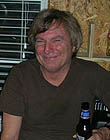



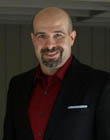

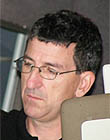
![[sleep]](graemlins/sleep.gif)
